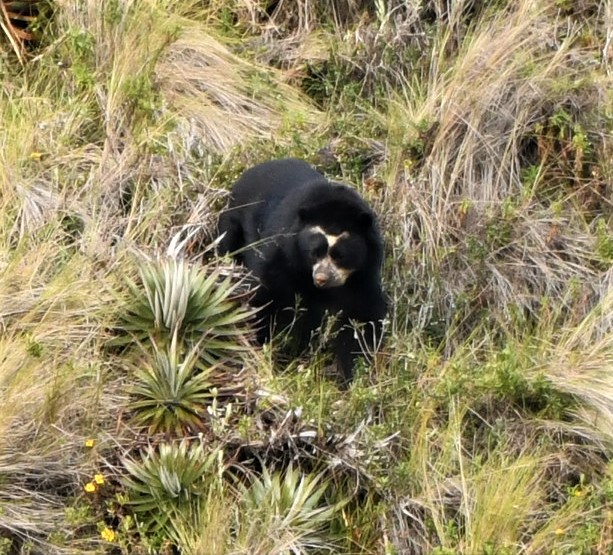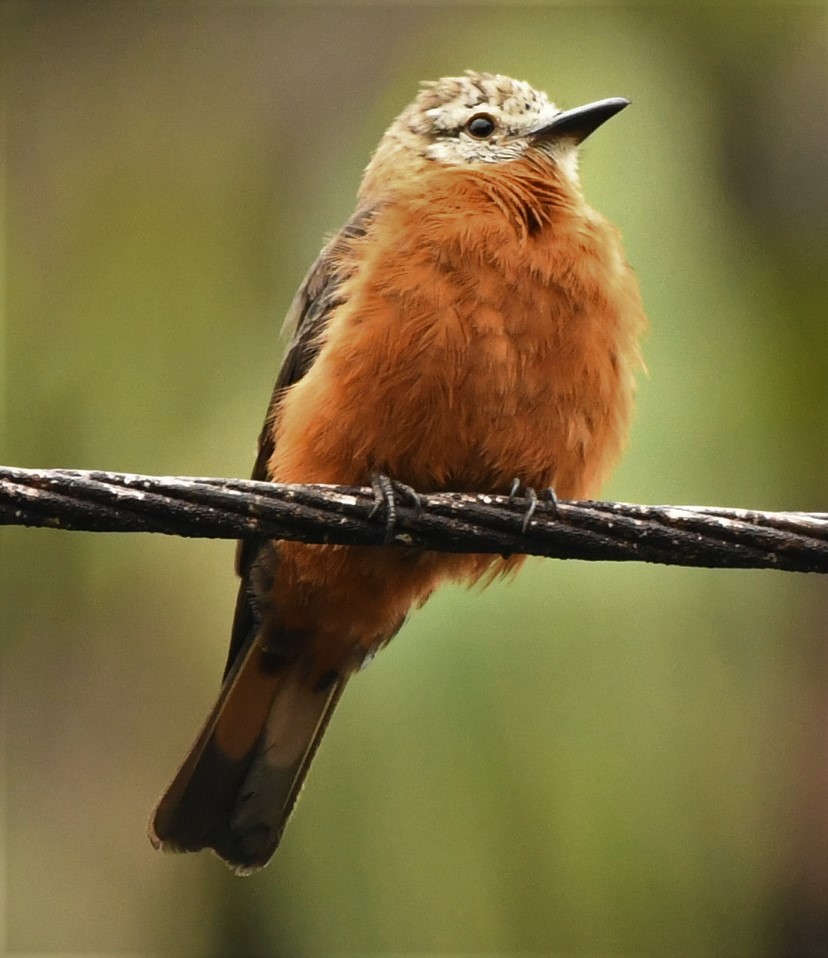Ecuador – East Slope March 28- April 6 2019
Callyn Yorke

Annotated Bird Checklist – East Slope
There are few destinations in the world supporting an astonishing and accessible birdlife such as that found in Ecuador. Within a land area about equal to the state of Nevada (110,000 square miles), 1,632 bird species have been recorded. Simply put, if you like birds, you will love Ecuador.

This was my fourth visit to Ecuador and first to the eastern Andean slope region. Rather than join a professional bird tour, of which there are many choices, I made arrangements for day-tours using local guides/drivers. This approach was convenient, productive and economical. My total cost for the ten-day excursion, including round-trip airfare between Los Angeles, CA and Quito, came in just under $3,000.

My principal contact in Quito was Mercedes, owner and manager of Puembo Birding Garden (PBG), located in a gated suburb northeast of central Quito. Mercedes, who also uses PBG as a dog rescue center, arranged everything –transportation, guides, lodging, meals –related to my agenda in Ecuador.

Mercedes has all the right connections for visiting birders. Wherever you need to go, whatever you want to see, whomever you want to meet, she can arrange it, and usually for considerably less than what most other tour operators would charge.
Within an hour of my arrival, Mercedes had located a driver/ bird-guide (Luis Perez), and assembled an exciting, four-day travel itinerary (29 March -1 April). I would be visiting a diverse array of habitats in the highlands and eastern slopes of the Andes, including the hauntingly serene paramo of two adjacent national parks, Cayambe-Coca (CCP) and Antisana (ANP). Next, we would make brief visits to the middle-elevation rainforest at Guango Lodge (GL), Cabanas San Isidro (CSI), both with good trail systems and plenty of birds around the lodge feeding stations and adjacent forest.


The last PBG birding day (April 1), Luis and I would head south to Wildsumaco Lodge (WSL), where I would stay until returning to Quito on April 6. These areas, together with multiple roadside birding stops along the Quito-Coca Hwy, all had wonderful birding and photography opportunities ($120/day, lunch and day-use fees included).
Returning to PBG each evening was pleasant. This little hosteria provides eight clean, affordable rooms, including home-style meals (breakfast and dinner; good vegetarian options – $65/day). Visiting birders in transit through Ecuador, together with Mercedes, who is very knowledgeable about wildlife viewing and birding locations in Ecuador, provided stimulating conversations at mealtimes.

Puembo Birding Garden included a bird feeding station walled in on two sides by glass, and adjacent property with fruit trees and shrubs attractive to birds. I spent a total of about four hours birding in and around PBG, mostly during the early morning and evening. Each day, Luis and I left PBG around 0630 hrs. and returned by 1700 hrs.


On the road
Luis Perez and I drove the relatively new, four-lane highway from Quito through Papallacta Pass, turning off on a dirt road near at the entrance of Cayambe-Coca National Park. In particular, we searched the antenna towers area for the Rufous-bellied Seed-snipe, an endemic and rather systematically anomalous, grouse-like bird of the high Andes. The elevation in our search area (about 4,125 m) seemed to have little effect on Luis, who vigorously walked the hillsides and valleys looking for this bird. Initially, I was nearly incapacitated at this altitude and waited impatiently, like a retriever told to “stay.” After awhile, Lewis emerged from the fog with his report. Nada. Maybe next time, we both agreed, nodding hopefully. Unfortunately, two more visits to this area also failed. The elusive bird, even in the relatively low herbaceous vegetation, could simply not be located. On the fourth visit however, our luck changed. By then, I was then fully acclimated to the thin air, and when a pair of Seed Snipe was spotted foraging nearby the roadway, I jumped out of the car and followed the birds up a hillside shrouded in mist, obtaining a series of recognizable images. The background-matched birds appeared tolerant to my presence and allowed me to approach to within 5 m, which was about the shortest focal distance of my 200-500mm Nikon lens, coupled with a D850 camera body. At one point, I had to back up to get the birds in focus.

The main goal of my visit to Ecuador was to observe and photograph birds, perhaps including some anecdotal insights into avian behavior and ecology — subjects I have been interested in for several decades. But there were distractions, i.e., compelling scenery and nature everywhere asking to be photographed. There was such a rich variety of life and geography, most of my optical equipment was in continuous usage for ten glorious days. Ecuador is simply a photographic bonanza.



One delightful non-birding side trip I made was a taxi ride through the old quarter of Quito, a World Heritage site.

Every turn and narrow lane in this fine old colonial town presented scenes that were straight out of National Geographic Magazine.

Walls of stone and white stucco, tile roofs, balconies with wrought iron railings, heavy wood- and- iron doors, set against the dark skies of an impending thunderstorm, added dramatic texture to the images – all shot from the car window with a Google Pixel 3 XL cell phone.
On the road – continued
Luis knew our route well and picked a number of birding hot spots each day. Antisana Natiional Park was essentially roadside birding with frequent short jaunts on trails. Highlights included relatively approachable specialties such as the gregarious Black-faced Ibis and Carunculated Caracara. Almost all of the Paramo birds were comparatively tame and easy to photograph at close range.


Two side trips were to Guango Lodge (elevation 2852 m), which had many hummingbird feeders buzzing with a dozen or so species – including some lifers for me, e.g. Tourmaline Sunangel, Chestnut-breasted Coronet, and Glowing Puffleg. Visiting birders and photographers from Asia, Europe and the Americas were also witnessing the spectacle.

A short walk from the rustic lodge was a trail through a riparian woodland, featuring a sleepy Andean Potoo facing away from our cameras in the subcanopy. A delightful downstream trail, paralleling a series of rapids, provided a glimpse of a Torrent Duck resting vigilantly on a rock.

Nearby, pair of White-capped dippers bounced over the stones, investigating a large crevice between two boulders (a nest site?).

My two-hours of birding at Guango was intense and highly productive, especially for photography. We returned once again on another day for a much shorter visit, which was also productive.

The main highways connecting Quito with Wildsumaco Lodge (HWY 28 and 45 S ‘The Coca Hwy’) were reasonably well maintained and offered a transect of the eastern slope of the Andes at a variety of elevations, ranging between about 3700 m and 1300 m. The scenery from Papallacta Pass to Baeza was varied and provided a few safe pull-outs for birding along the road. Unfortunately, heavy rains had caused new landslides that blocked the highway at several locations.

I had made a prior booking for a 5-night stay (April 1-5, 2019) at Wildsumaco Lodge at the south end of our birding route along the east slope of the Andes. Mercedes handled the required cash pre-payment and arranged for Luis to drive me to WSL from PBG on an all-day birding tour. Along the way, we made a few stops but rain and poor road conditions prevented us from doing much birding. We did stop at the stake-out location for a snoozing Swallow-tailed Nightjar, which, like the Andean Potoo at Guango, was facing away from us and partly concealed in dripping wet foliage. That resulted in some rather ho-hum, mediocre photos. Further south the weather cleared and we visited a small, family operated bird-feeding station in Baeza, called Las Brisas. Although it appeared initially to be little more than a makeshift platform at the edge of a small homestead, I was pleasantly surprised to see several hummers appear, including one species that we did not find elsewhere, Tawny-bellied Hermit (subsequently photo-identified by Dr. Jon Feenstra, an American birder and Wings tour leader in Ecuador). This encounter reminded me how localized bird distributions in Ecuador may often be, further reinforcing the need to visit as many birding locations as possible within each region.
Wildsumaco Lodge was, unequivocally, the best birding location I visited during this trip. The lodge property included forest trails, hummingbird feeders, a mealworm feeding station and a very productive moth trap feeding station.

In addition, there was very good birding along several kilometers of an unpaved road between the highway and lodge. Among the more memorable species I observed at Wildsumaco were, Green-fronted Lancebill, Wire-crested Thorntail, Black-throated Brilliant, Golden-tailed Sapphire, White-chested Puffbird, Yellow-tufted Woodpecker, Peruvian Warbling Antbird, White-backed Fire-eye, Black-faced Antbird, Plain-backed Antpitta, White-crowned Tapaculo ,Olive-backed Woodcreeper, White-crowned Manakin, Violaceous Jay, Black-billed Thrush, Magpie Tanager, Golden Tanager, Yellow-browed Sparrow, Russet-backed Oropendola, Crested Oropendola and Olivaceous Siskin.
Wildsumaco Lodge accommodation, food and services were reasonably priced and generally excellent ($120/day). My room (#5) was spacious, clean and well appointed. Daily meals were on schedule, varied and with good vegetarian options. The staff was always available to answer questions and offer assistance.

However, I was initially surprised by the relatively high cost of transport from Wildsumaco Lodge to Quito ($200). But it turned out that my bilingual driver-guide, Karlos Cabrera, was an excellent birder and knew exactly where to stop along the long road trip to Quito. Since it was raining on the outgoing trip (1 April) our progress had been impeded by several landslides, and Luis and I missed the Cliff Flycatcher, a highly localized specialty. No worries. Karlos knew the place for this bird and on the way back we were treated to a small flock hovering around a roadside cliff and alighting on a utility line.

Another brief but memorable stop on the return trip from Wildsumaco (6 April), was at Cabanas San Isidro (elevation 2060 m).

In addition to a couple of active hummingbird feeders outside the dining area, was a wooded area full of bird life. Highlights included, Long-tailed Sylph, Bronzy Inca, Beryl-spangled Tanager and Scarlet-rumped Cacique. Cabanas San Isidro is also famous for its fine cuisine, which did not disappoint us.